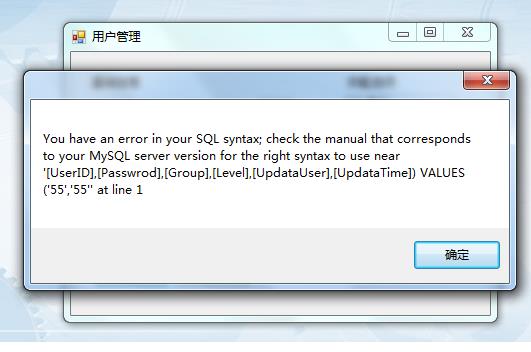那位帮我看下这个句子对不对?为啥?
Posted
tags:
篇首语:本文由小常识网(cha138.com)小编为大家整理,主要介绍了那位帮我看下这个句子对不对?为啥?相关的知识,希望对你有一定的参考价值。
I have had 3 cups of coffee up to now within today.
I have had 3 cups of coffee since today
这个句子对吗?
那么I have had 3 cups of coffee so far today
这个句子对吗?
i have had 3 cups of coffee up to now today.
去掉within就可以了,在今天(at) today,at,经常省掉
I have had 3 cups of coffee since today
这个句子对吗?
错误,since不能和today搭配
since的用法主要有两点:一是表示“自从……以来”,二是表示“既然”之意。但如果只了解词的含义,而不了解其用法,在使用时就会造成错误。例如:I have not heard from him since I lived in Shanghai.
不少人会望文生义,将该句译为:“自从我住在上海以来,就再也没有收到他的信了。”而实际上这个句子的译文并非如此,那么正确的含义是什么呢?
下面谈谈since作连词引导时间状语从句的用法。
一、若since引导的状语从句的谓语动词是终止性的过去时,则从句表示的时间是“从动作开始的那一时刻起”。如:
He has studied very hard since he came to our school.自从他来到我们学校,他学习就非常努力。
We have been missing them since they left here自从他们离开这里,我们就一直很想念他们。
这是最常见的一种用法,此处不再多述。
二、若since引导的状语从句的谓语动词是持续性动词或表示状态的动词的过去时时,则从句表示的时间是“从那持续动作或状态结束时算起”。如:
I haven’t heard any noise since I slept. Sleep 为持续性动词,sleep的动作结束时,即“醒来”时,这句应译为“我醒后还未听到任何声音”。
John is now with his parents in New York, it is already three years since he was a teacher约翰现在和父母一起住在纽约,他不当教师已经三年了。
本文开始出现的那个句子就可以译为“自从我离开上海,就再也没有收到他的信。”这种译法常被人们误用,我们不妨再多举几个例子看看:
How long is it since you lived in Shanghai?你离开(没住在)上海多久了?
It is half a month since he was a League member.他退团(不当团员)半个月了。
It’s been quite some time since I was last in London我离开伦敦已很长时间了。
比较:He has written to me frequently since I was ill.自从我病愈以来,他屡次给我写信。(从句谓语为状态动词)
He has written to me frequently since I fell ill.自从我生病以来,他就屡次给我写信。(从句谓语为终止性动词)
三、若since引导的状语从句的谓语为持续性动词的现在完成时,则表示动作和状态延续到现在(说话时刻),其表示的时间的起点应从动作发生之时算起。如:
I haven’t heard from him since he has lived there。
这里has lived表示动作的持续性,时间的起点应从:“开始居住”时算起。因此此句可理解为“自从他(开始)住在那儿起,我就一直没收到他的来信”。
Since we have owned a car, we have gone camping every year。自从我们自己有了汽车,我们每年都去野营。
试比较:1. Since I’ve been at this school, we have had three headmasters.自从我到这所学校,我们已换了三个校长了。
Since I was at this school, they have had three headmasters.自从我离开这所学校,他们已换了三个校长了。
2.He has never been to see me since I have been ill. 自从我生病以来,他从未来看过我。
He has never been to see me since I was ill. 自从我病愈以来,他从未来看过我。
由此可见,since引导的从句持续动词的一般过去时和现在完成时所表示的意思恰好相反。换言之,前者以肯定的语法形式反映着否定的逻辑内容,而后者的形式与内容是一致的。
至于It is +一段时间+since…的句型与It has been +一段时间+since…意思相同。前者是规范说法,后者是口语说法。
应注意的是,在这种结构中,since引导的从句绝对不能用否定式的谓语动词来表示否定意义,下面两句都错了:
It is a long time since he didn’t study English.
It’s two months since you didn’t come to see me.
正确的说法为:
It’s a long time since he studied English 他好久没学英语了。
You haven’t come to see me for two months. 你有两个月没来看我了。
错误
i have had 3 cups of coffee up to now today.
去掉within就可以了,在今天(at) today,at,经常省掉
within
介词within的一般含义是“在……范围内”,既可指空间限度,亦可指时间限度,强调“在……之内而不超出”之意。但此介词在科技英语中,特别是用于“标准”(Standard)、“规范”(specification)和“图纸”(drawing)时,则往往含有“偏差(误差)不得超过规定范围”之意。译时务必小心,否则就会差之毫厘,失之千里。试看下面例句:
1. The gross and usable capacity of type I production tanks shall be within
the range of 0 to +3 percent up to a maximum of 0 to +15 gallons of the
designed gross and usable capacities of the tank.
误:I型产品油箱的总容积和有效容积应在其相应设计值的0~+3%范围内,最大偏差可达0~15加仑。
正:I型产品油箱的总容积和有效容积对其相应设计值的偏差应在0~3%范围内,最大偏差可达0~15加仑。
2. Cf obtained with MD-2 tester should be within +_1.5% of the calculated
Cf.
误:由MD-2试验器测得的Cf值应在Cf计算值的+_1.5%范围内。
正:由MD-2试验器测得的Cf值相对于Cf计算值的偏差应在+_1.5%范围内。
within的这种用法,在图纸的技术要求中尤为多见。例如:
3. 3 boss faces (are ) to lie in a plane within .010 relative to any one
boss.
三个凸台端面应在一个平面内,相互间的偏差不大于0.010。
4. Face C (is) to be flat within 0.002 T.I.R.
端面C的平面度误差应不大于.002总指示读数。
由上述诸例可见,在科技英语中,X shall (or should) be within N of Y可以作为一个句型来掌握,其中N常为一表示误差范围的数,如百分数、数值范围等。可译为“X相对于Y的偏差(或误差)应在N范围内(或不得大于N)”。而切不可译为“X应在Y的N范围内”。此时within所表达的限度是以Y为基准而言的,意即X相对于Y的变化范围不超过N;of则当作“对……而言”解,而不作“……的”解。实际上,这与within的本意及其在普通英语中的用法并不矛盾。例如,我们说It
is within three miles of the station. 意即“它离车站不到三英里”。根据上述公式,这句话表示它位于以车站为圆心、半径为3英里的一个圆形区域内。 参考技术A within 后接today不妥,常见的接一段时间,表示在一时间段内,比如
I must finish painting the cat within five minutes.我必须在五分钟之内画好这只猫。 因此原句如果去掉within 后在语法上是没有错误的.再给你贴点东西...
现在完成时的用法
=====================
have(has)+过去分词
1.现在完成时用来表示现在之前已发生活或完成的动作或状态,但其结果却和现在有联系,也就是说,动作或状态发生在过去但它的影响现在还存在.
I have lost my wallet.(含义是:现在我没有钱花了.)
Jane has laid the table.(含义是:已可以吃饭了.)
Michael has been ill.(含义是:现在仍然很虚弱)
He has returned from abroad. (含义是:现在已在此地)
2. 现在完成时可以用来表示发生在过去某一时刻的,持续到现在的情况,常与for,since连用.
Mary has been ill for three days.
I have lived here since 1998.
3. 现在完成时往往同表示不确定的过去时间状语连用,如already, yet, just, before, recently, lately等:
He has already obtained a scholarship.
I haven't seen much of him recently (lately).
We have seen that film before.
Have they found the missing child yet
4. 现在完成时常常与表示频度的时间状语连用,如often, sometimes, ever, never, twice, on several occasion等:
Have you ever been to Beijing
I have never heard Bunny say anything against her.
I have used this pen only three times. It is still good.
George has met that gentleman on several occasions.
5. 现在完成时还往往可以同包括现在时间在内的时间状语连用,如now, up to these few days/weeks/months/years, this morning/week/month/year, now, just, today, up to present, so far等:
Peter has written six papers so far.
Man has now learned to release energy from the nucleus of the atom.
There has bee too much rain in San Francisco this year.
The friendly relations and cooperation between our two countries have been enhanced in the past few years.
Up to the present everything has been successful.
6. 现在完成时表示现在之前业已完成的动作,虽然其效果或影响仍然存在但已不再继续,但是有一些现在完成时的句子,在后面加上for+一段时间,则现在完成时的动作就表示延续性.
Thomas has studied Russian. (现在不再学俄语)
Thomas has studied Russian for three years. (=Thomas began to study Russian three years ago, and is still studying it now.(同第2点用法第一个例句)
7. 现在完成时还可以用来表示过去的一个时间到现在这段时间内重复发生的动作.
We have had four texts this semester.
===================
现在完成时的“完成用法”和“未完成用法”
1.现在完成时的"完成用法"
现在完成时的"完成用法"指的是动作发生在过去某一时刻并已结束,但该动作对现在产生了影响,与现在情况具有因果关系。
例如:He has turned off the light.他已把灯关了。(动作结束于过去,但说明的是现在的情况--灯现在不亮了。)
现在完成时"完成用法"的特点是动作不延续,因此,该时态只能与表示不定的过去时间状语(如:already,yet,before,recently等)、频度时间状语(如:never,ever,once等)、包括现在时刻在内的时间状语(如:this morning / month /year...,today等)连用。
例如: Have you found your pen yet?你已找到你的钢笔了吗?
2.现在完成时的"未完成用法"
现在完成时的"未完成用法"指的是动作开始于过去某一时刻,一直延续到现在,或可能还要继续下去。
例如:He has lived here since 1978.自从1978年以来,他一直住在这儿。(动作起始于1978年,一直住到现在,可能还要继续住下去。)
I have been in the army for more than 5 years.我在部队已经呆了五年多了。(动作开始于5年前,一直延续至今,有可能还要继续下去。)
此种用法的句中常需一个表示一段时间的状语(由since或for引导),或表示与现在时刻相连的时间状语(如:up to now,so far)等。
例如:I have heard nothing from him up to now.到目前为止我没有他的任何消息。
注意:(1)现在完成时的未完成用法只适用于延续性动词,不可用于终止性动词,即瞬间完成或延续时间很短的动词。如:come,go,arrive,leave,join,become,die等。
(2)现在完成时常见两种句型:
①主语+have / has been+for短语
②It is+一段时间+ since从句
例如:He has been in the League for three years.或It is three years since he joined the League. 他入团已三年了。 参考技术B 不对,
这句话中的时间状语用的不是很合适。
today 有副词的性质,所以today前不用再加表示程度限制的within
此外,用up to now 没有用so far 好,后者更适用于现在完成时 参考技术C within不能要
我觉得since today也不正确
since是用于从某时开始到现在,从今天到今天不恰当
so far可以用,但是个人感觉不能和today连用,这样看起来不地道本回答被提问者采纳 参考技术D 在今天以内我已经到目前为止喝3杯咖啡.
汗~~~~~~
c# sql INSERT 报错帮我看下
String sqlInsert = "INSERT INTO a_user_tb ([UserID],[Passwrod],[Group],[Level],[UpdataUser],[UpdataTime]) VALUES ('" + comboBox1.Text.Trim() + "','" + comboBox1.Text.Trim() + "','" + xGroup + "','" + comboBox2.Text.Trim(
) + "','" + SysInfor.XName + "','" + DateTime.Now.ToString("yyyy-MM-dd hh:mm:ss") + "')";
MySqlCommand ComSql1 = new MySqlCommand(sqlInsert, ConSql2); ComSql1.ExecuteNonQuery(); ConSql2.Close();

问题可能是多了引号等
以上是关于那位帮我看下这个句子对不对?为啥?的主要内容,如果未能解决你的问题,请参考以下文章
jquery AJAX提交前beforesend无效,大家帮我看下谢谢。